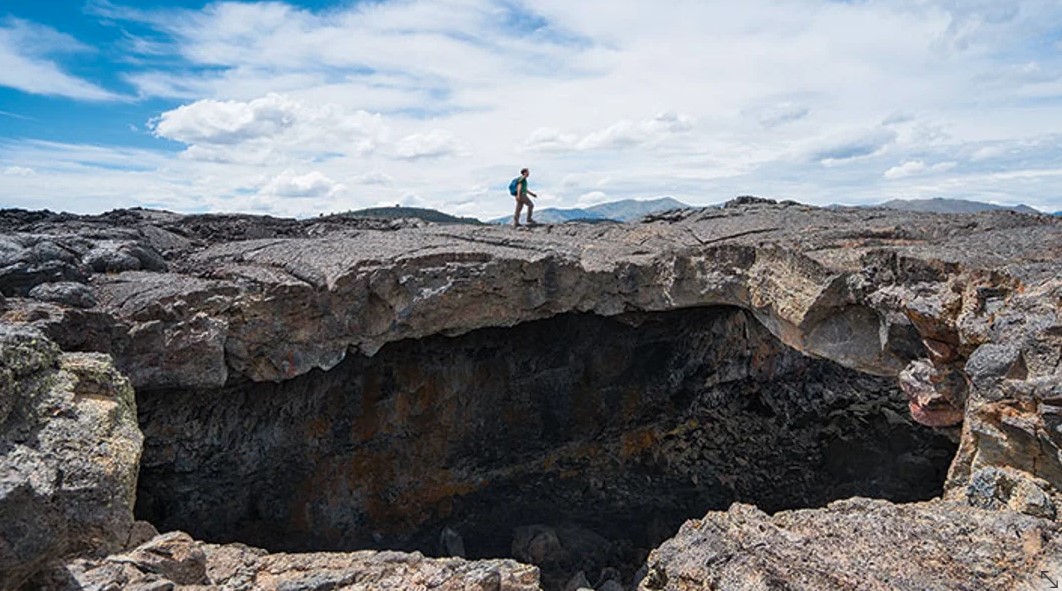
 Descending into the ancient volcano feels like being swallowed by a monster. I set up camp in the mouth of the beast, surrounded by 200-foot cliffs—and am immediately overwhelmed with peace and quiet. But the tranquility in the crater bottom belies a violent past: Two-thousand years ago, molten rock gushed from these cracks in the earth, while ferocious explosions from thousand-foot-high cinder cones sent car-size boulders hurtling through the air. A quick foray from my campsite, 3.8 miles deep in Craters of the Moon National Monument, reveals evidence of this rocky past. Cylindrical cavities mark the spots where trees were entombed in flowing lava before rotting away, leaving their hollow forms in the hardened rock. Jagged chasms exist where ancient tunnels of lava formed and collapsed. A weekend of exploring these geologic wonders only fuels my curiosity—and ensures that I’ll be back soon. Link to story
Descending into the ancient volcano feels like being swallowed by a monster. I set up camp in the mouth of the beast, surrounded by 200-foot cliffs—and am immediately overwhelmed with peace and quiet. But the tranquility in the crater bottom belies a violent past: Two-thousand years ago, molten rock gushed from these cracks in the earth, while ferocious explosions from thousand-foot-high cinder cones sent car-size boulders hurtling through the air. A quick foray from my campsite, 3.8 miles deep in Craters of the Moon National Monument, reveals evidence of this rocky past. Cylindrical cavities mark the spots where trees were entombed in flowing lava before rotting away, leaving their hollow forms in the hardened rock. Jagged chasms exist where ancient tunnels of lava formed and collapsed. A weekend of exploring these geologic wonders only fuels my curiosity—and ensures that I’ll be back soon. Link to story
Anna Daly writes: Craters of the Moon National Monument hit a big milestone this month – turning 100 years old.
On May 2nd, 1924, the more than 1,100 square mile area of volcanic formations and lava fields in Central Idaho’s Snake River Plain was designated a national monument by President Calvin Coolidge.
